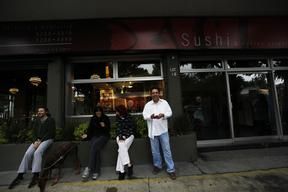
The earthquake-prone capital of Mexico saw itself struck by the second strong quake this summer on Wednesday, with buildings swaying and people rushing to evacuate buildings as an earthquake alarm sounded. A second, smaller quake followed up the first only a few minutes later. Miguel Angel Mancera, mayor of Mexico City, told a local televisión station that there were no immediate reports of injuries. The US Geological Survey put the quake's magnitude at 6.1 on the Richter scale - what the Associated Press deemed "moderately strong" - and said that the epicenter was in the poor southern state of Guerrero, near the resort of Acapulco.
Raúl Esquivel, chief of the city's fire department, wrote on Twitter that the department hadn't received any emergency calls stemming from the earthquake. "At the Fire Department, as of the time being, we do NOT have any emergency calls coming in consequence of the sismo, we remain alert," he wrote. Other Twitter users from across the city and elsewhere chimed in under the hashtags #temblor ("#earthquake") and #tenemossismo ("#quakehitus). Many wrote of having been awakened by the rocking, as it occurred at a little past 7:30 this morning, Central Time.
The last earthquake of considerable size to hit Mexico City was only this past June, when a 5.8-magnitude one saw buildings disgorging of people and occasioned blackouts in certain parts of town. The epicenter of that quake was in Guerrero, too. Mexico's capital is often affected by even very distant earthquakes because of the ground on which it sits - a drained lake bed whose sediments make for unsteady ground when tremors run through them. It also happens to be a hotbed of tectonic activity, anyway; the country itself is one of the world's most seismologically active regions, as it's located atop three of the large tectonic plates. When these plates move, earthquakes happen - so do volcanic eruptions, like those of Puebla's Popocatepetl volcano. According to the US Geological Survey, most of the landmass in Mexico is on the North American plate, which is shifting westward. The Pacific Ocean floor south of the county, however, is being carried northeast by the Cocos plate it sits on. The convergence of the two is responsible for a deep trench off the Pacific coast, the mountain ranges of southern Mexico and earthquakes along its southern coast.
Even when relatively moderate quakes hit Mexico City, the shadow of terribly destructive ones lingers in the public's memory: in September 1985, an 8.1-magnitude earthquake killed over 9,500 people in the capital.
RELATED: Queen Of The Pacific Arrested In Mexico After Deportation From US
© 2025 Latin Times. All rights reserved. Do not reproduce without permission.




